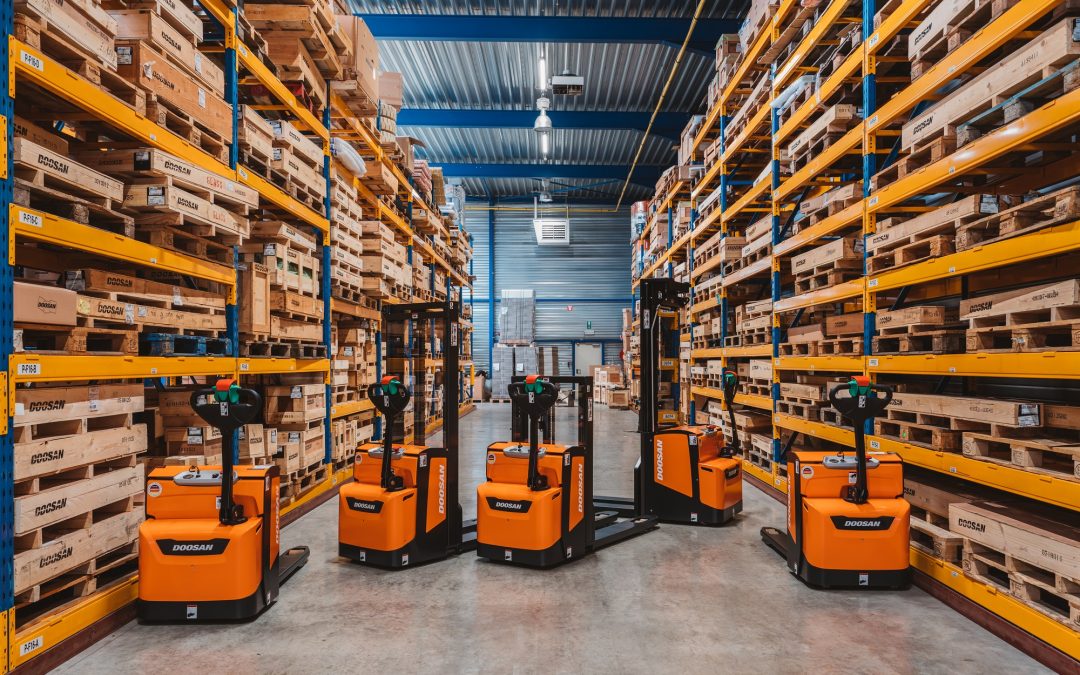The global forklift industry was valued at approximately $2.06 billion USD in 2021. Now, it is expected to soar with a 9.5% CAGR – meaning, we could be looking at a value estimated at around $4.65 billion USD for the forklift industry.
The forklift is a motor-powered industrial vehicle truck designed for lifting and transporting products and crates over short distances. Developed in the early 1900s, the forklift truck is one of the most widespread trends in warehouses and factories across the world, growing more popular every year.
It is found in sectors associated with the need to load and unload goods, often in warehouses and dockyards but also in factories and recycling plants. Some models of the forklift come with additional features or attachments – forklifts with platforms, pedestrian forklifts, and forklift trucks with grippers are all growing rapidly in popularity within the industry.
With new innovations coming out each year, the forklift is becoming one of the most versatile pieces of machinery in the industry and 2022 is already predicted to be a year that will see some of the greatest modifications to the forklift since its development.
This blog will explore what 2022 looks like for the forklift industry and outline some key forklift trends.
What caused the surge in forklift production?
In the last ten years, the forklift industry has seen a national boom in the UK. In 2009, 17,658 units were sold compared to the staggering figure upwards of 35,000 units in 2018. This increase of over 50% has correlated with the sales growth in markets in both Britain and abroad.
Unlike other countries across the world, the UK and EU do not tax forklift trades and this has allowed the market to grow as it has – more consistently and more reliably than any other market.
What impact did the COVID pandemic have on the forklift industry?
The COVID-19 pandemic has had a detrimental effect on the world and industries across the globe. This unprecedented health crisis brought the UK and every other country to a national standstill, as well as the global economy. Resulting in widespread market drops, business closures, and industry threats, the pandemic has had an undeniable impact on all industries.
And the same can be said for the forklift industry. However, it’s important to note that with large-scale lockdowns and consumers being forced to turn to more online shopping, the forklift industry has actually seen huge growth.
Will it continue to grow as online ordering is still more popular after the pandemic?
More consumers than ever are now aware of and often prefer to use online shopping since the COVID-19 lockdown. This has meant that warehouses storing products for online retailers and e-commerce have seen a much greater demand since the start of the pandemic and have had to develop and adapt accordingly.
However, the material handling industry as a whole has seen the same distress as every other industry during the pandemic. The economic upheaval in 2020 caused by both the restrictions on social consumption and Brexit has threatened the forklift industry. It has meant logistics needed to be looked at in a new light and manufacture had to be put on hold.
But now, industry experts are predicting 2022 will act as a segue into the new forklift future predicted to reach pre-pandemic production and economic levels by 2023.
With market players raising their investments and the e-commerce boom driving bulk warehouse demand, the forklift industry can expect to see more growth in 2022.


